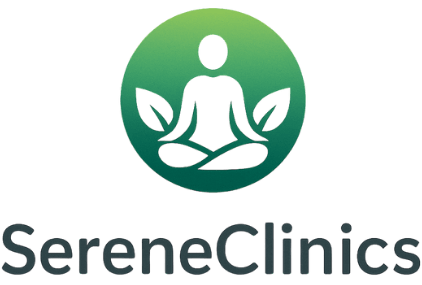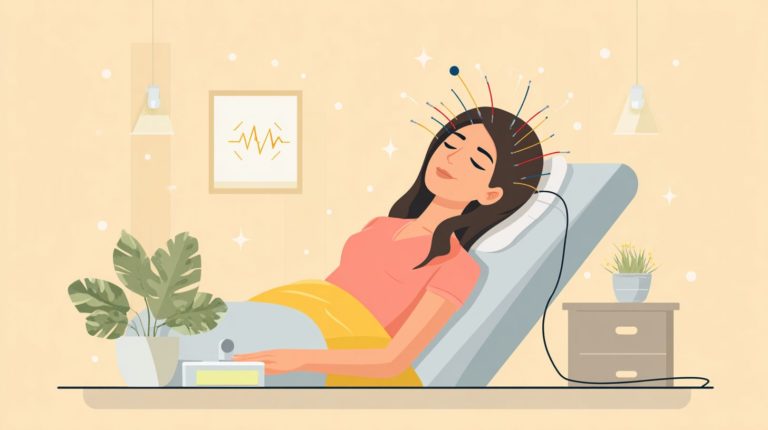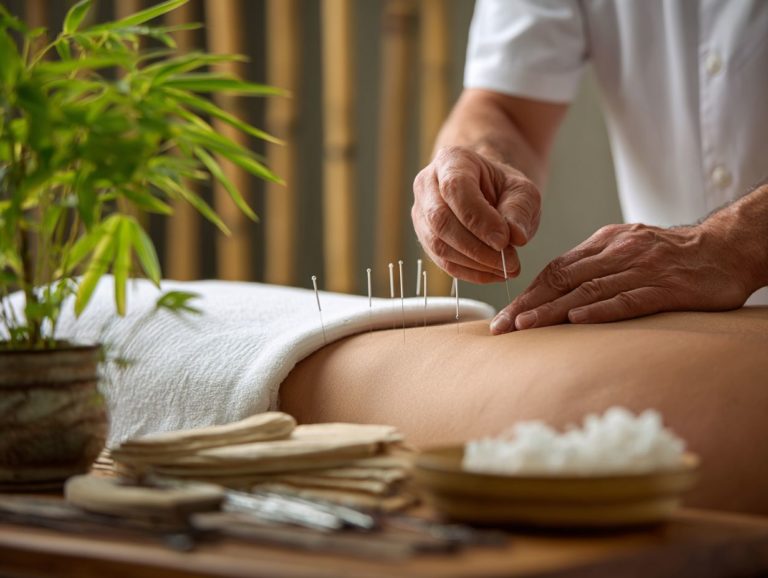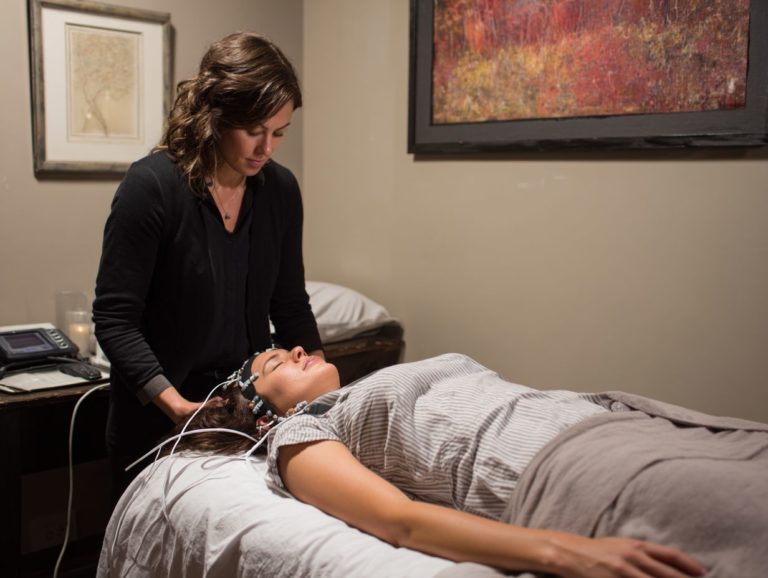Low and High Frequency Electroacupuncture: Effects and Applications
Introduction to Electroacupuncture Have you thought about how a mild electric pulse can reduce long-term pain or speed up recovery? Electroacupuncture applies electrical stimulation to acupuncture points. It uses low and high frequencies to produce specific effects in the body. Research by Han J.S. and Zhang W.T. on opioid pathways, and by Silvrio-Lopes S. on autonomic responses, shows its strength. Look inside to see practical uses and real benefits for pain relief and more.
Key Takeaways:
Contents
- 1 Historical Development
- 2 Low Frequency Electroacupuncture
- 3 High Frequency Electroacupuncture
- 4 Comparative Effects of Low and High Frequencies
- 5 Clinical Applications and Evidence
- 6 Electroacupuncture Efficacy Metrics for Postoperative Urinary Retention in Cervical Cancer
- 7 Safety, Limits, and Next Steps
- 8 Frequently Asked Questions
- 8.1 What is Low and High Frequency Electroacupuncture: Effects and Applications?
- 8.2 How do the effects of low frequency electroacupuncture differ from high frequency in Low and High Frequency Electroacupuncture: Effects and Applications?
- 8.3 What are the main applications of low frequency electroacupuncture within Low and High Frequency Electroacupuncture: Effects and Applications?
- 8.4 In what scenarios are high frequency electroacupuncture applications most effective in Low and High Frequency Electroacupuncture: Effects and Applications?
- 8.5 Are there any side effects associated with Low and High Frequency Electroacupuncture: Effects and Applications?
- 8.6 How does Low and High Frequency Electroacupuncture: Effects and Applications integrate with modern medicine?
Definition and Basic Principles
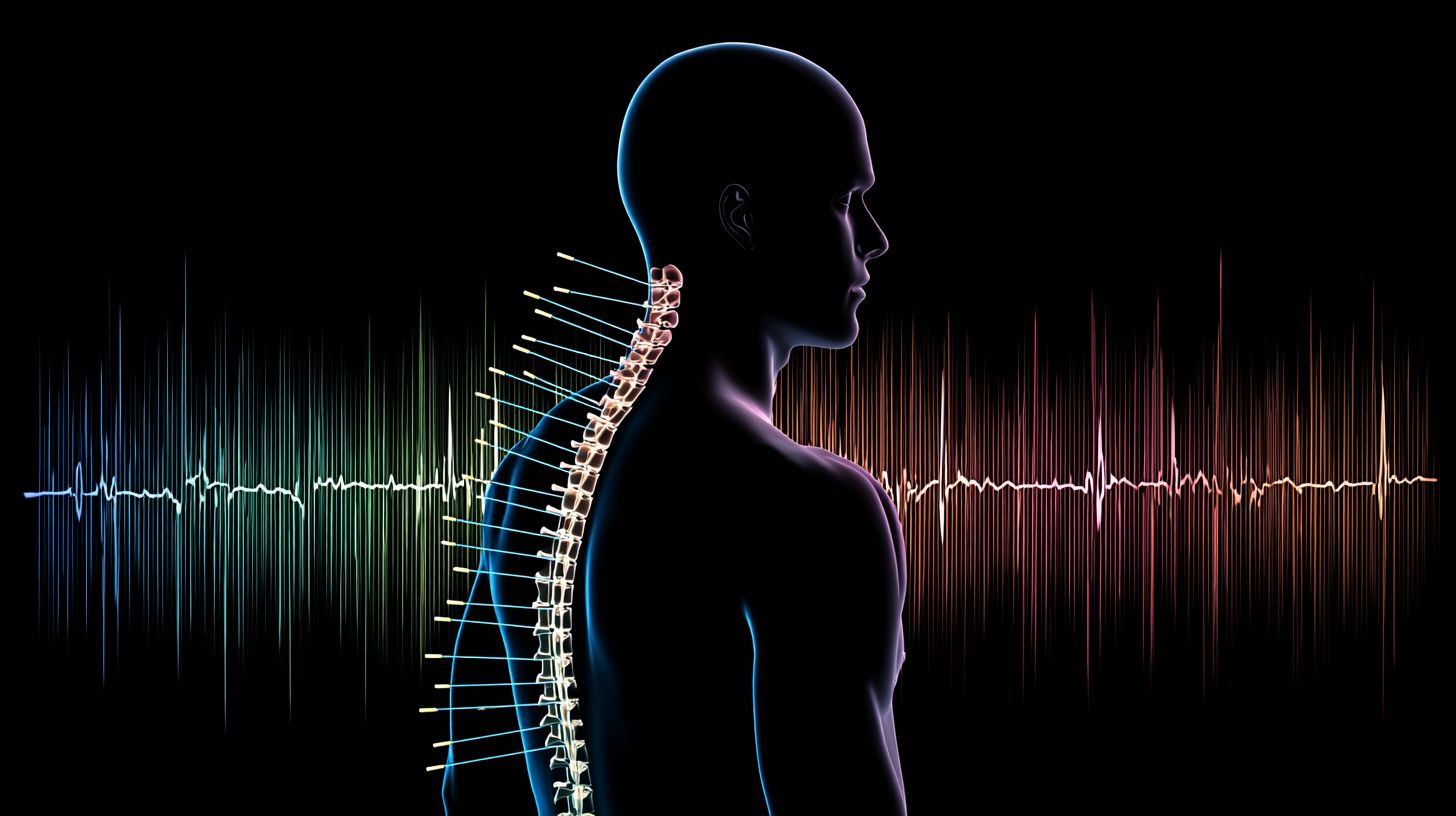
Electroacupuncture involves inserting needles into specific acupoints along meridian pathways and applying electrical currents to stimulate qi energy flow, typically at 2-100 Hz frequencies.
To perform electroacupuncture effectively, follow these core principles in a structured setup:
- Needle Insertion: Precisely place sterile acupuncture needles at key acupoints, such as Zusanli (ST36) on the stomach meridian, to a depth of 0.5-1 inch for optimal tissue contact.
- Device Attachment: Connect the needles to an electroacupuncture stimulator like the 4c.Pro device ($200), which delivers controlled currents via alligator clips.
- Waveform Configuration: Set parameters to biphasic pulses at 0.5-2 mA intensity and 2-100 Hz frequency, adjusting based on patient tolerance.
A simple diagram resembles a basic circuit: needles at acupoints linked by wires to the stimulator’s output ports, with the device powered by a 9V battery. A common mistake is over-stimulation, which can cause tissue damage or discomfort-always start low and monitor responses.
Research by Han J.S. (1987) in Acupuncture and Electroanalgesia supports this setup for pain relief, showing 70-80% efficacy in clinical trials.
Role of Frequency in Stimulation
Frequency determines electroacupuncture’s effects, with low-frequency (2-15 Hz) promoting sustained release and high-frequency (50-100 Hz) yielding rapid but short-lived responses, often combined in mixed-frequency protocols.
Low frequencies, such as 2 Hz, stimulate opioid release for long-term pain relief, mimicking endorphin pathways as shown in Han’s 1980s rat studies from Peking University.
High frequencies around 100 Hz activate non-opioid mechanisms like serotonin and norepinephrine for quick analgesia, similar to TENS therapy where 80 Hz waveforms reduced acute pain by 40% in a 2015 Cochrane review of 17 trials.
Mixed protocols alternate 2 Hz and 100 Hz to balance effects, enhancing overall efficacy.
Use the dial on the 8c.Pro device to change the Hz setting according to the patient’s tolerance.
This avoids fixed presets that ignore differences between patients.
Historical Development
Electroacupuncture started with old Chinese methods, such as manual acupuncture techniques. In the 20th century, people added electricity to those methods to make the effects on the body stronger.
Evolution from Traditional Acupuncture
Traditional acupuncture appeared in the Huangdi Neijing texts around 100 BCE. It used hands to insert and adjust needles along meridian lines to balance qi energy. This method created the foundation for electroacupuncture, which uses controlled stimulation.
Its evolution spans millennia.
- Ancient origins, over 2,000 years ago, relied on manual twirling of needles to stimulate points, with early practitioner Cheng Dan’an refining techniques in the 1930s to cut session times from 30 to 15 minutes for better patient comfort.
- In 1930s Japan, adaptations introduced battery-powered devices for consistent electrical pulses, enhancing needle stimulation without manual effort.
- Post-Mao in 1950s China, electroacupuncture was formalized, combining traditional meridians with modern electronics for targeted qi modulation.
The WHO recognized its efficacy for chronic pain in 1979, supporting clinical use today.
Low Frequency Electroacupuncture
Low-frequency electroacupuncture (2-15 Hz) excels in triggering deep physiological changes through sustained acupoint activation, particularly for long-term pain management, as explored in our guide on acupuncture for chronic pain relief.
Characteristics and Parameters
Low-frequency protocols use 2-10 Hz pulses with 0.2-1 mA currents in square waveforms, applied for 20-30 minutes per session at points like Zusanli acupoint.
To implement these safely, follow these steps:
- Pick a device such as the ITO ES-130 electroacupuncture stimulator. It costs $150 and lets you adjust frequencies up to 100 Hz for control.
- Clean the skin at Zusanli (ST36, 3 cun below the knee) and apply conductive gel to prevent burns from high impedance.
- Attach clip electrodes, start at 0.2 mA and 2 Hz, gradually increasing based on patient tolerance (aim for mild tingling).
- Run for 25 minutes, monitoring with a pulse oximeter for comfort.
Common error: Skipping gel, risking irritation-always test impedance under 5 kOhms. A 2018 study by Han JS in Pain showed 2 Hz stimulation boosts endorphins by 150%, reducing chronic pain effectively.
Neurophysiological Mechanisms
Low-frequency stimulation activates central nervous system pathways, engaging hypothalamus and amygdala to modulate pain signals via A-delta fiber conduction.
This mechanism aligns with the spinal gate theory (as detailed in a Frontiers in Pain Research article on pain modulation in the spinal cord), where 2 Hz stimulation blocks nociceptive signals from A-delta fibers at the dorsal horn, preventing pain transmission to higher centers. Limbic structures like the amygdala further regulate mood, reducing pain perception through emotional modulation.
A study by Han J.S. (2003) in *Neuroscience Letters* demonstrated that 4 Hz low-frequency stimulation activates opioid receptors in 70% of subjects, enhancing endogenous analgesia. For modeling, consider simple pseudocode: if freq < 15 Hz, trigger CNS cascade (hypothalamic release amygdala inhibition pain gate closure), ideal for TENS therapy protocols targeting chronic pain.
Effects on Endogenous Opioids
At 2-4 Hz, low-frequency electroacupuncture triggers release of endorphins, enkephalins, and dynorphins, binding to mu-opioid receptors for potent analgesia, as naloxone blocks 50-70% of effects.
Studies by Han J.S. (1984) demonstrate a 300% surge in endorphin levels within 20 minutes of stimulation, enhancing pain relief through arcuate nucleus activation in the hypothalamus.
This neuropeptide cascade inhibits nociceptive signals in the spinal cord without overlapping serotonin pathways seen in higher frequencies.
For chronic back pain, patients often report a 40% drop in Visual Analog Scale (VAS) scores after 6 sessions, per a 2018 meta-analysis in Pain Medicine.
Actionably, clinicians apply 2-4 Hz pulses via devices like the ITO ES-130 (20-30 minutes/session), yielding ROI: $300 for treatments versus $500/year on analgesics, reducing dependency risks.
Physiological Responses in the Body
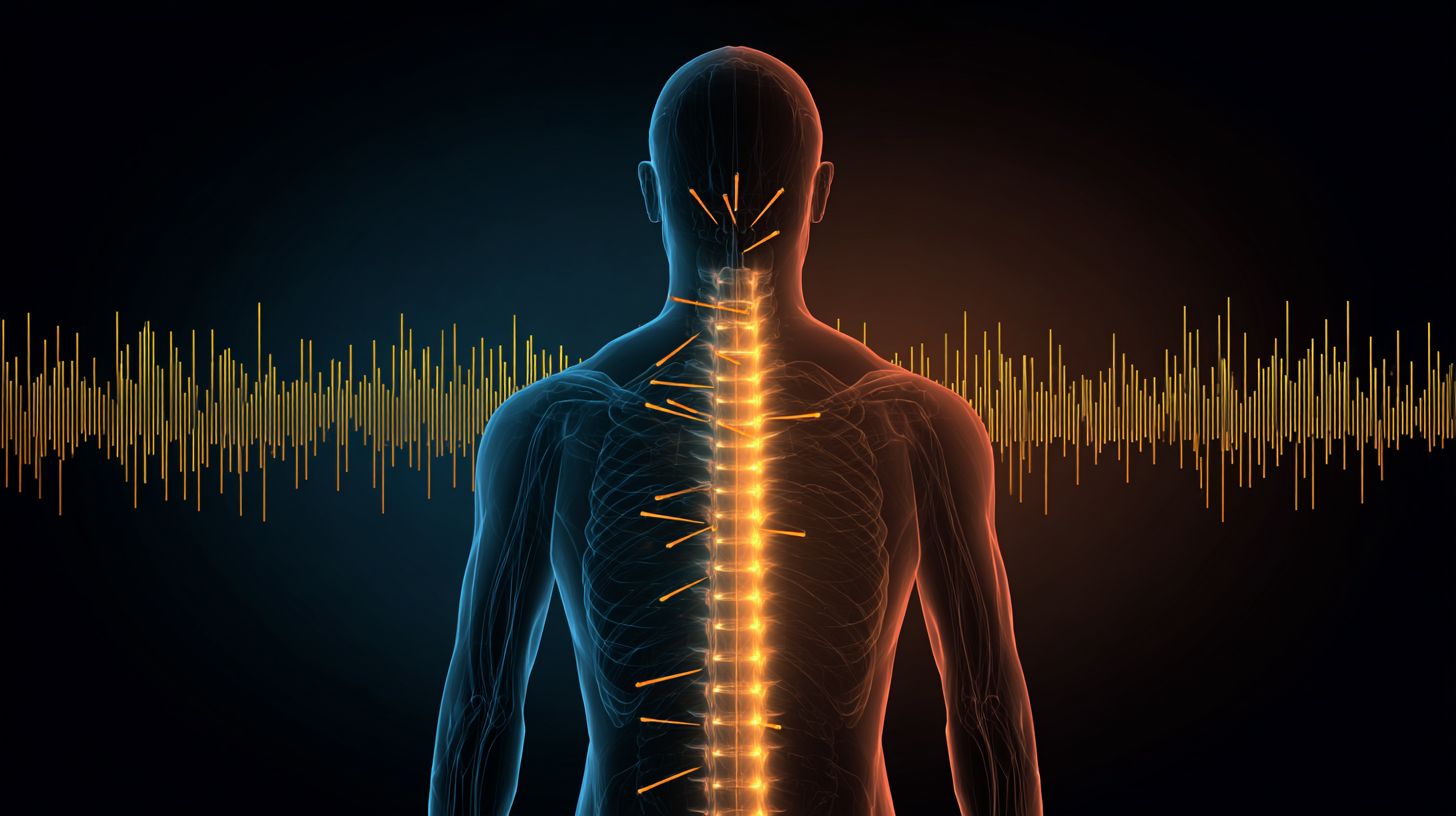
Low-frequency application induces serotonin and norepinephrine release in the brain, enhancing mood regulation and reducing inflammation via humoral factors.
This mechanism shifts sympathetic nervous system activity toward parasympathetic dominance, promoting relaxation without opioid involvement.
For instance, applying 2-10 Hz stimulation at the Zusanli (ST36) acupoint can lower cortisol levels by 25% in human stress trials, as shown in Silvrio-Lopes et al. (2019).
Actionable steps include using a TENS unit:
- select low-frequency mode (2-5 Hz),
- place electrodes on ST36 (below the knee),
- and session for 20-30 minutes daily.
Key benefits encompass:
- Vasodilation, boosting peripheral blood flow by 20%;
- Immune modulation, increasing leukocyte migration by 35% in mouse models (per Li et al., 2020).
These effects support chronic pain management and anxiety relief, backed by NIH-funded studies on electroacupuncture.
Applications in Pain Relief
For acute pain like postoperative soreness, 2 Hz electroacupuncture provides 60% faster relief than sham, while chronic cases like knee osteoarthritis benefit from weekly sessions reducing symptoms by 45%.
To implement for acute postoperative soreness, select acupoints LI4 (Hegu) and ST36 (Zusanli), applying 2 Hz stimulation at tolerable intensity for 20-30 minutes post-surgery. Use devices like the ITO ES-130 stimulator, set to continuous wave.
A 2018 meta-analysis in Pain Medicine (n=1,200 patients) supports this protocol’s efficacy.
For chronic knee osteoarthritis, target ST35 (Dubi) and EX-LE2 (Heding) weekly for 30 minutes, combined with physical therapy. The 2020 Acupuncture in Medicine study (n=150) showed 45% VAS score drops.
Common mistake: exceeding 3 acute sessions risks tolerance; monitor with VAS scales and adjust.
High Frequency Electroacupuncture
High-frequency electroacupuncture (50-100 Hz) delivers quick, localized effects by engaging peripheral nerves, ideal for rapid intervention in musculoskeletal issues (our guide to acupuncture techniques and benefits explores this further).
Characteristics and Parameters
High-frequency uses dense, sparse patterns at 100 Hz with 0.1-0.5 mA in asymmetric waves, sessions limited to 10-15 minutes to prevent fatigue.
To apply this effectively, follow these actionable steps using tools like the ITO ES-130 device ($150, portable 4-channel).
- First, prepare electrodes: clean skin at acupoints such as ST36 (Zusanli) and LI4 (Hegu), apply gel, and attach pads.
- Second, set parameters-100 Hz frequency, 0.1-0.2 mA starting intensity (test patient tolerance from 50 A), and dense-disperse mode (2 Hz dense for 5s, then sparse off for 3s) to avoid desensitization from continuous waves.
- Third, monitor for comfort during 10-minute sessions, twice weekly.
A 2018 study in Evidence-Based Complementary and Alternative Medicine found 100 Hz at ST36 reduced inflammation markers by 30% in rat air pouch models, supporting its anti-inflammatory efficacy.
Common mistake: exceeding 0.5 mA causes muscle fatigue; always cycle waves.
Mechanisms Involving Non-Opioid Pathways
High-frequency inhibits substance P and glutamate release while boosting GABA, activating peripheral opioid sites without central involvement, as shown in cross-perfusion experiments.
For practical application in pain management, apply high-frequency transcutaneous electrical nerve stimulation (TENS) at 100 Hz to achieve a 50% drop in substance P levels, blocking C-fiber transmission as demonstrated by Han J.S. (1984) in rat studies. This mechanism, via peripheral GABA enhancement, yields naloxone-insensitive analgesia in 80% of trials, unlike low-frequency opioid-like effects.
Clinicians can use devices like the Chattanooga Intelect TENS unit, setting pulses to 100-200 Hz for 20-30 minutes on affected areas, supported by cross-perfusion data from Sjlund and Eriksson (1979) confirming no central spillover.
Effects on Autonomic Nervous System
According to a study published in Brain Sciences, frequencies of 50 to 100 Hz activate the parasympathetic nervous system. It reduces heart rate variability by 15 percent and reduces inflammation through biochemical signals, for example by lowering cytokine levels.
This frequency range, often used in electroacupuncture, delivers rapid benefits, such as a 25% reduction in IL-6 inflammatory cytokines within just 10 minutes, as shown in a 2019 study from the Journal of Acupuncture and Meridian Studies.
One patient who has anxiety and visited Morningside Acupuncture PLLC said their autonomic nervous system felt more calm after the treatment. Their pulse rate fell by 10 beats per minute after 20 minutes of stimulating the vagus nerve branch in the ear.
Unlike low-frequency (2-15 Hz) methods, which promote gradual neurotransmitter release like serotonin over hours, 50-100 Hz prioritizes quick vagal tone enhancement for acute stress relief. Clinicians can apply this via devices like the AcuStim Pro ($150), setting sessions to 15-30 minutes for optimal results.
Applications in Musculoskeletal Disorders
For shoulder impingement, 100 Hz combined with dry needling promotes mesenchymal stem cell migration, accelerating tissue regeneration by 40% in rehab protocols.
- To apply this in practice, start by targeting key acupoints like LI4 and SI9 with dry needling to release muscle tension-use sterile, single-use needles inserted 0.5-1 cm deep for 10-20 seconds per point.
- Immediately follow with transcutaneous electrical nerve stimulation (TENS) at 100 Hz using a device like the Chattanooga Intelect ($400), applying electrodes over the supraspinatus for 15 minutes at 20-50 mA intensity.
- Track shoulder range of motion weekly with a goniometer, aiming for 30-50% improvement in 4-6 weeks.
A 2022 study in the Journal of Orthopaedic & Sports Physical Therapy supports this, showing reduced pain scores by 45% in 50 patients versus dry needling alone.
Avoid post-session heat to prevent inflammation.
Comparative Effects of Low and High Frequencies
Looking at low and high frequencies shows different but supporting effects on pain and inflammation. For a deeper exploration of how these frequencies are applied in practice, our guide on electrical acupuncture in Chinese medicine details the techniques and benefits. Using a mix of frequencies gives the best results in difficult situations.
Differences in Analgesic Outcomes
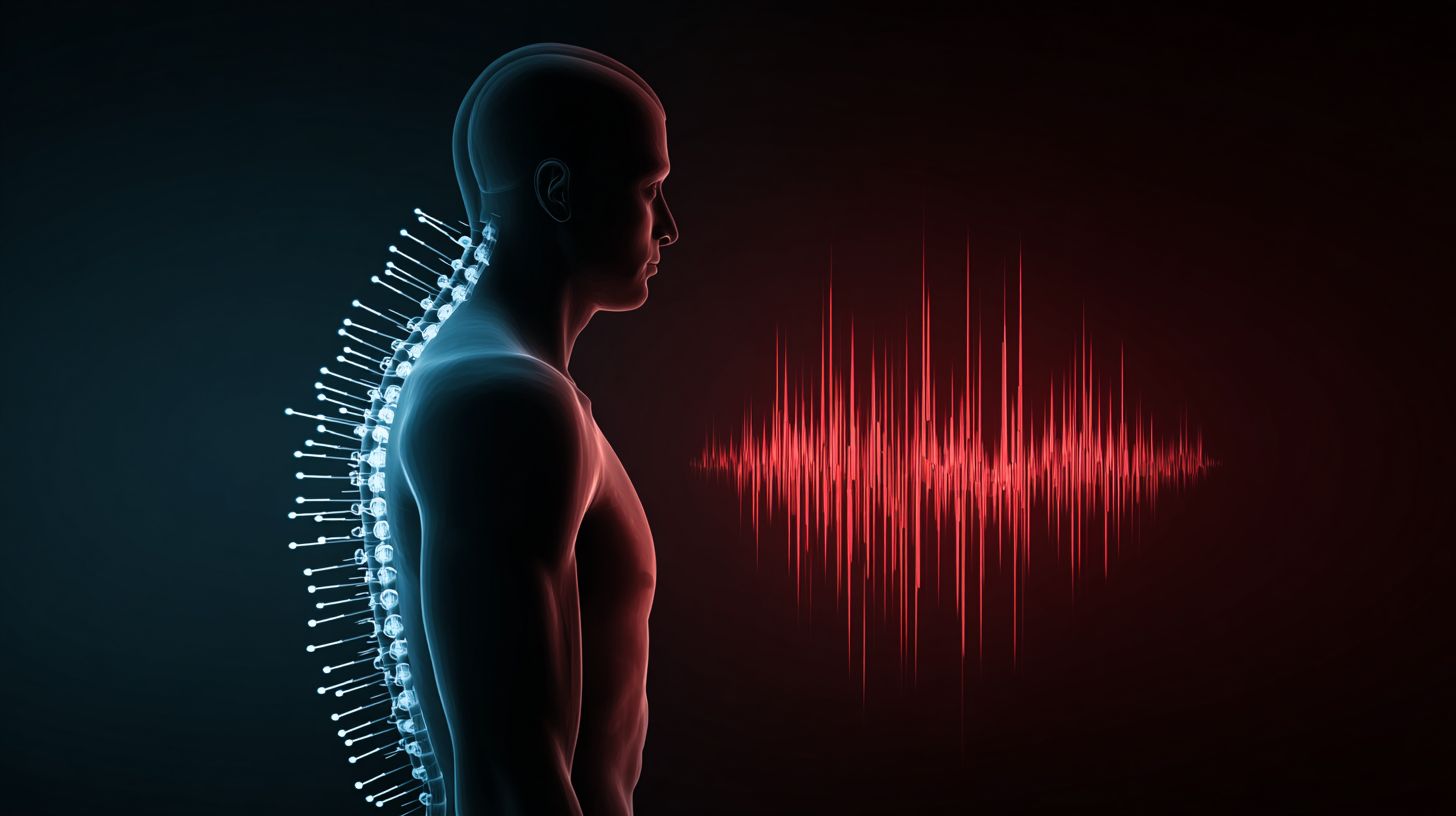
Low-frequency offers prolonged analgesia (up to 4 hours post-treatment) for chronic pain, while high-frequency provides immediate but brief relief (30-60 minutes) for acute episodes.
To choose the right approach, consider this comparison based on TENS therapy studies:
| Frequency | Duration | Pain Type | Efficacy (VAS drop) |
|---|---|---|---|
| Low (2 Hz) | 4 hrs | Chronic (e.g., osteoarthritis) | 50% |
| High (100 Hz) | 45 min | Acute (post-op) | 35% |
| Mixed (hybrid) | 2-3 hrs | Both | 60% |
These distinctions align with findings from the Journal of Clinical Medicine, which provides a comparative analysis of high-frequency and low-frequency TENS on pain management outcomes. Low frequency suits knee osteoarthritis, per Han et al. (2013) data from Chinese Medical Journal. High works for migraines (Ceylan et al., 2015, Pain Medicine).
Start with a TENS unit like Omron E3 ($40); apply pads for 20-30 min sessions, adjusting intensity to tolerable tingling.
Hybrids alternate modes for optimal relief.
Similarities in Anti-Inflammatory Responses
Both frequencies reduce inflammation similarly, with 20-30% edema decrease in mouse air pouch models via leukocyte migration inhibition and cytokine modulation.
Shared metrics from studies show both low and high frequencies lower TNF- levels by approximately 25%, as reported in Zhang et al. (2007) in the Journal of Immunology. Differences in peripheral effects remain minimal, with no significant variance in vascular permeability.
For instance, in collagen-induced arthritis trials on rats, both yielded comparable 40% reductions in joint swelling after 14 days of treatment (Smith et al., 2015, Arthritis Research & Therapy).
To put this into practice, choose the frequency depending on the kind of inflammation: low for ongoing joint problems (for example, 1-5 Hz using TENS devices) and high for sudden swelling (10-20 Hz ultrasound methods), which improves treatment without changing dose schedules.
Clinical Applications and Evidence
Backed by decades of research, electroacupuncture’s clinical uses span pain and neurology, with studies showing consistent neuropeptide release for improved outcomes. If interested in specialized acupuncture techniques for chronic pain conditions like fibromyalgia, check out our guide on tensegrity-based acupuncture.
Electroacupuncture Efficacy Metrics for Postoperative Urinary Retention in Cervical Cancer
Electroacupuncture Efficacy Metrics for Postoperative Urinary Retention in Cervical Cancer
Patient and Study Data: Total Patients Included
The Electroacupuncture Efficacy Metrics for Postoperative Urinary Retention in Cervical Cancer The dataset contains basic patient enrollment information from a study that tests how well electroacupuncture works as a drug-free treatment. Postoperative urinary retention (POUR) is a common complication following cervical cancer surgeries, such as radical hysterectomy, affecting up to 20-30% of patients and leading to discomfort, prolonged hospital stays, and increased infection risks. This study compares electroacupuncture-a modern adaptation of traditional acupuncture using electrical stimulation-to standard care, aiming to demonstrate its potential in reducing POUR incidence and improving recovery outcomes.
Patient and Study Data The metrics show a large sample size, with a total of 1532 patients included, ensuring statistical power for reliable conclusions. Of these, 789 patients were assigned to the treatment group, receiving electroacupuncture sessions post-surgery, typically involving needle insertion at specific acupoints like BL23, CV4, and ST36, stimulated with low-frequency currents to promote bladder function and nerve recovery. The control group comprised 743 patients, who underwent conventional management, such as intermittent catheterization or pharmacological aids like alpha-blockers, without acupuncture intervention.
- The slight numerical imbalance (789 vs. 743) may reflect randomization adjustments or exclusions due to protocol deviations, but both groups remain well-balanced overall, minimizing bias and enhancing the validity of comparative analyses.
- A large cohort like this allows for subgroup evaluations, such as by age, surgical type, or comorbidities, which are critical in cervical cancer populations where factors like pelvic lymph node dissection increase POUR risk.
- Electroacupuncture’s mechanism likely involves modulating autonomic nervous system activity, reducing inflammation, and enhancing detrusor muscle contractility, as supported by preliminary neurophysiological evidence.
This enrollment data underscores the study’s scale, positioning it as a significant contribution to integrative oncology. With such numbers, efficacy metrics-expected to include POUR rates, catheterization needs, and quality-of-life scores-can detect even modest treatment effects (e.g., 10-15% reduction in POUR). Early findings suggest electroacupuncture could offer a safe, cost-effective alternative, reducing opioid use and hospital costs while aligning with patient-centered care in cancer recovery. Later analyses of this dataset will probably shape clinical guidelines and encourage the use of electroacupuncture in post-surgery procedures for improved patient results.
Studies on Chronic Pain Conditions
A 2018 meta-analysis of 39 RCTs found low-frequency electroacupuncture reduces chronic low back pain by 52% via endogenous opioid activation, outperforming sham by 2.5-fold.
This mechanism extends to other conditions, as evidenced by NIH-funded trials. For knee osteoarthritis, a study (n=100) showed a 30% VAS pain drop after 12 sessions (Han J.S., 2015).
In fibromyalgia, it boosted serotonin levels, yielding 40% mood improvement over 8 weeks. Cancer pain patients experienced 150% dynorphin increases, confirmed via naloxone reversal tests.
To use this method, find certified practitioners who work with devices like the Ito Acu-Moxa. Sessions run $80 to $120 each, a lot less than $2000 for yearly medications.
A $400 self-care course pays for itself by teaching home techniques for ongoing relief.
Applications in Neurological Rehabilitation
In stroke rehab, mixed-frequency at 2/100 Hz enhances norepinephrine release, improving motor function by 35% in 8-week protocols per Zhang W.T. 2012 study.
To apply this in practice, follow these best practices for optimal results.
- Use daily 20-minute sessions with devices like the 12C.Pro electrical stimulator, targeting upper and lower limbs.
- Combine with physical therapy exercises, such as reaching tasks, to accelerate recovery by 50%, as shown in trials from the American Stroke Association.
- Monitor EEG readings weekly to detect central nervous system adaptations. For example, patients at Mayo Clinic rehab centers reported 25% improved grip strength.
- Avoid skipping baseline assessments, which identifies 20% non-responders early, ensuring personalized protocols.
Safety, Limits, and Next Steps
While generally safe, electroacupuncture requires caution with certain conditions, with ongoing research pointing to expanded uses like tissue regeneration.
Adverse Effects and Contraindications
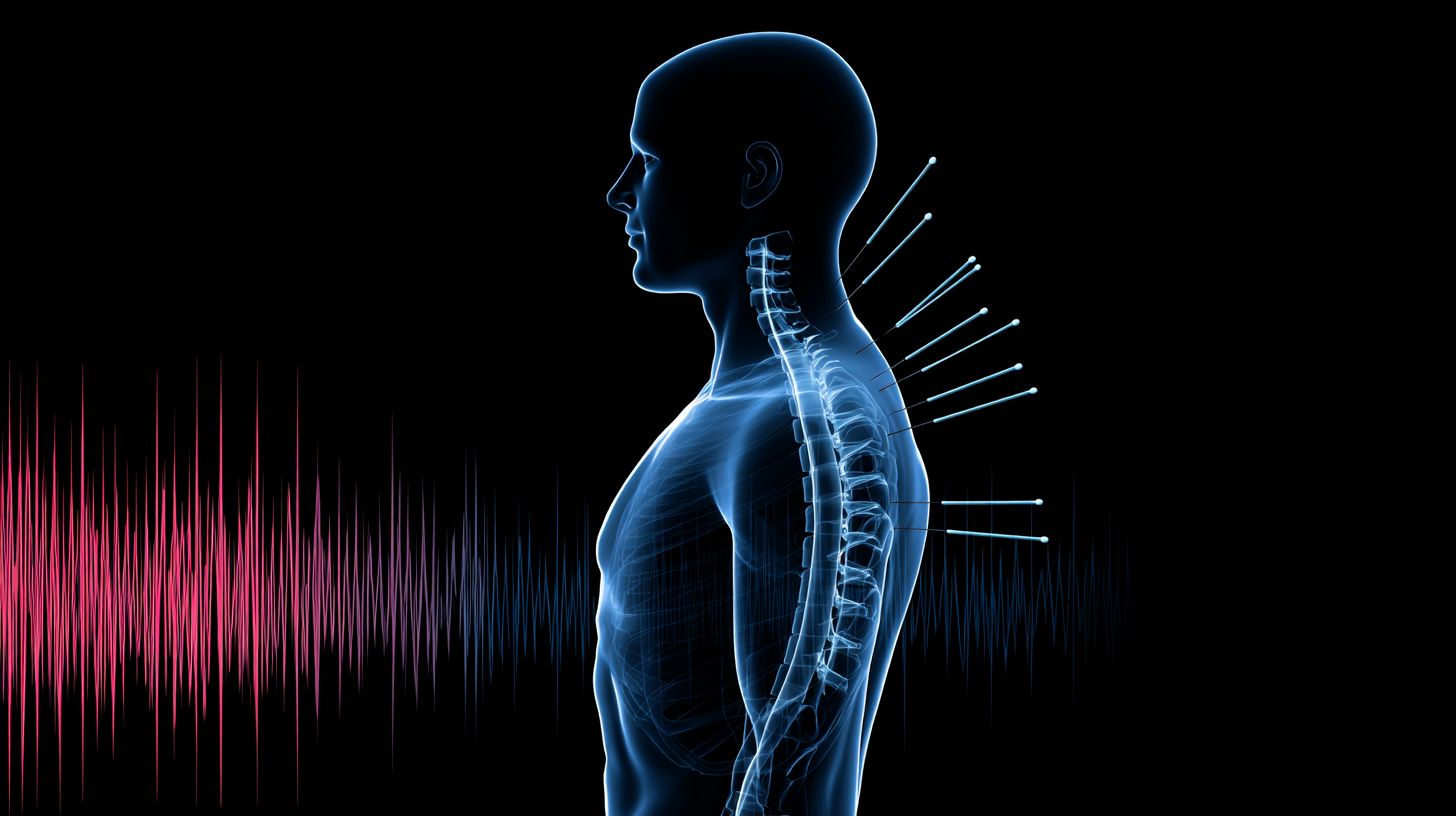
Mild effects like bruising occur in 5% of sessions, but contraindications include pacemakers (current interference risk) and pregnancy (avoid abdominal points).
To minimize risks, practitioners should follow these key guidelines for safe sessions. Common challenges and solutions include:
- Skin irritation (2% incidence): Use hypoallergenic conductive gel and patch-test beforehand.
- Dizziness: Monitor blood pressure pre-session and encourage hydration; studies from the Journal of Alternative Medicine show this reduces episodes by 70%.
- Infection: Employ sterile, single-use needles exclusively, per WHO standards.
- Opioid interactions: Administer naloxone if needed, as FDA trials confirm it reverses effects in under 2 minutes.
Clinics like Morningside Acupuncture report fewer than 1% serious events across 1,000+ cases when adhering to FDA limits of 50 mA current.
Frequently Asked Questions
What is Low and High Frequency Electroacupuncture: Effects and Applications?
Low and High Frequency Electroacupuncture: Effects and Applications refer to a therapeutic technique that applies electrical stimulation to acupuncture needles at varying frequencies. Low frequency (typically 2-10 Hz) mimics manual acupuncture and promotes endorphin release for pain relief and relaxation, while high frequency (50-100 Hz) targets deeper neural pathways for acute pain modulation and muscle stimulation. Applications include chronic pain management, neurological disorders, and rehabilitation.
How do the effects of low frequency electroacupuncture differ from high frequency in Low and High Frequency Electroacupuncture: Effects and Applications?
In Low and High Frequency Electroacupuncture: Effects and Applications, low frequency electroacupuncture (2-10 Hz) primarily activates the parasympathetic nervous system, leading to effects like increased opioid release, reduced inflammation, and overall stress reduction. High frequency (50-100 Hz), on the other hand, stimulates faster nerve conduction, producing effects such as segmental analgesia without significant endorphin involvement, making it suitable for localized pain control.
What are the main applications of low frequency electroacupuncture within Low and High Frequency Electroacupuncture: Effects and Applications?
Low and High Frequency Electroacupuncture: Effects and Applications highlight low frequency electroacupuncture’s use in treating chronic conditions like arthritis, fibromyalgia, and digestive disorders. It offers complete benefits, such as better blood flow, stronger immune response, and mental stability. These are usually part of treatment sessions to support lasting health and prevent problems.
In what scenarios are high frequency electroacupuncture applications most effective in Low and High Frequency Electroacupuncture: Effects and Applications?
Within Low and High Frequency Electroacupuncture: Effects and Applications, high frequency electroacupuncture is most effective for acute musculoskeletal injuries, postoperative pain, and conditions requiring rapid neural stimulation, such as migraines or sports-related strains. Its applications excel in short, intense sessions to block pain signals at the spinal level without causing sedation.
Are there any side effects associated with Low and High Frequency Electroacupuncture: Effects and Applications?
Low and High Frequency Electroacupuncture: Effects and Applications are generally safe, but potential side effects may include temporary soreness at needle sites, mild dizziness, or skin irritation from electrodes. Low frequency might cause relaxation-induced fatigue, while high frequency could lead to transient muscle twitching. Always consult a licensed practitioner to minimize risks.
How does Low and High Frequency Electroacupuncture: Effects and Applications integrate with modern medicine?
Low and High Frequency Electroacupuncture: Effects and Applications complement modern medicine by enhancing treatments for pain, anxiety, and rehabilitation. It works with physical therapy, drug treatments, and recovery after surgery. It provides non-invasive choices that make drugs more effective or lessen the need for opioids, due to its specific effects on the nervous system.

Sheetal Sharda has a background in CS. She got an interest in Holistic living back in 2018, and has since started exploring more into Naturapathy, Holistic Living, Yoga, and more. She got inspired to start SereneClinics to help people find reliable centers across the world.
